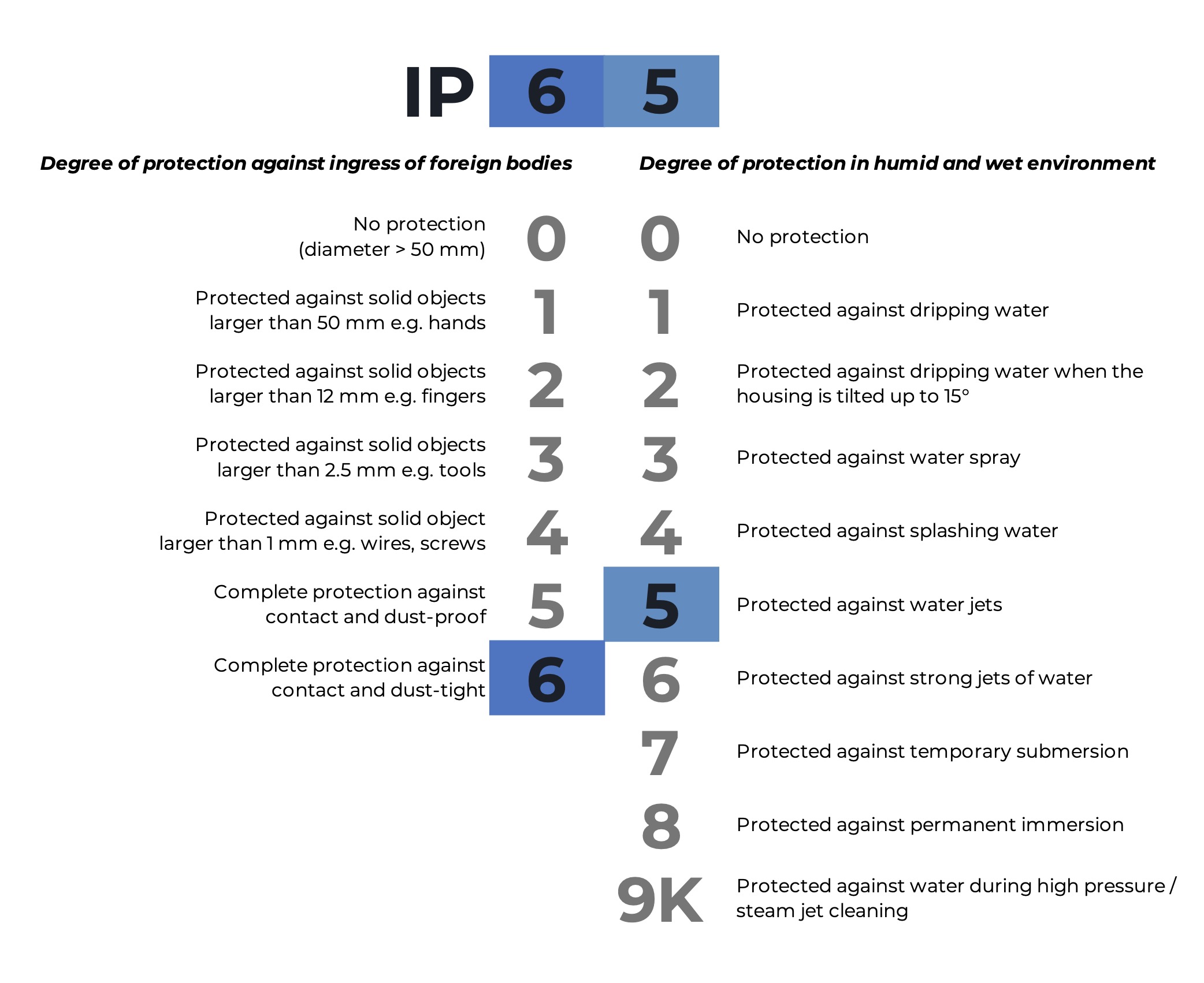IP protection classes and ATEX approval for sensors

What are the IP protection classes for sensors and what does ATEX approval mean? Industrial designers and engineers who develop machines or industrial applications must plan for specific safety features to protect against improper contact with foreign objects and external environmental influences. Depending on the application, sensors must be protected from dust, moisture, bacteria, germs and dirt.
Whether sensors are suitable for use in the various environmental conditions can be identified by protection classes, expressed with IP codes. The IP (Ingress Protection) class system is an international standard whose protection classes are clearly defined according to IEC 60529 (DIN EN 60529).
The respective IP protection class describes the extent to which an electrical device is protected against unintentional ingress of dirt, foreign bodies and liquids. However, protection against penetrating liquids only refers to water.
IP code: How is it structured?
The IP code is composed of the prefix “IP” and two digits. The first digit indicates the degree of protection against ingress of foreign bodies. The second digit represents the degree of protection in damp and wet environments.
The degree of protection increases as the code number increases. Devices with IP65 or higher code numbers are simultaneously protected to IP60 to IP64. From IPX5, this statement is no longer generally valid. Usually, several protection classes are specified in this case to guarantee that the housing can withstand all corresponding situations.
An overview of the possible code numbers can be found in the following IP protection class table:

All NCTE sensors are equipped with protection classes IP50 or IP65 as standard. The protection classes are specified for each sensor series in the “Technical data”.
A sensor with IP50 protection is “dust protected”, meaning that dust cannot enter in such quantity as to affect the satisfactory operation of the instrument or safety. Sensors with IP65 protection are completely dust-tight and also protected against water jets.
Suitable for hazardous areas on request

As an option, NCTE also offers its 2000 Series non-contact torque sensors with Zone 2, T2 Atex approval as standard. The official approval according to the Atex directives of the European Union confirms the safety in hazardous areas. T2 designates the temperature class for which a maximum permissible surface temperature of 300 °C applies. NCTE also develops customized torque sensors for other Atex zones and temperature classes. Ask us directly if you would like to learn more.